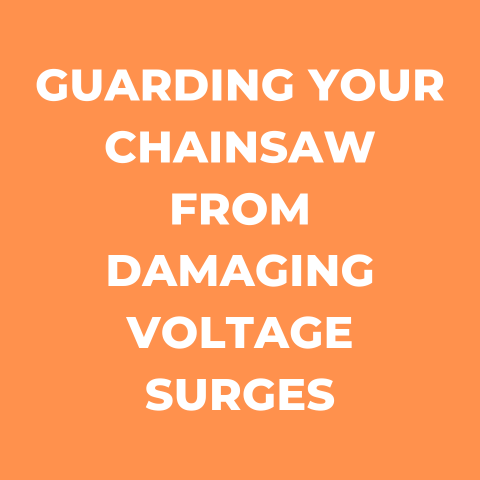Overheating Wires: Chainsaw Safety (Explained)
Operating a chainsaw safely requires properly functioning equipment. Electrical issues like overheating wires can lead to dangerous malfunctions or breakdowns. For chainsaw users, knowing how to identify and troubleshoot these problems is essential. This guide will outline common electrical issues in chainsaws, provide step-by-step solutions, and offer preventative measures to avoid issues altogether.
Chainsaws are powerful tools that can become hazardous if not properly maintained. One critical component is the electrical system which powers the motor and controls. Faulty wiring and connections is a frequent cause of chainsaw failures. Overheating wires in particular pose a high risk of fire, injury, or complete breakdown.
Detecting and addressing electrical problems early is crucial. Chainsaw users should learn basic troubleshooting and make it part of their regular maintenance routine. With some fundamental knowledge and preventative care, many electrical issues can be solved at home safely, quickly and economically. This guide aims to equip users with the key information needed to do just that.
Common Electrical Issues
Several distinct problems point to potential electrical faults in a chainsaw. Being able to identify the following will allow users to pinpoint and address the problem correctly:
Overheating Wires and Connections
Excess heat anywhere in the electrical system can mean damaged wires or poor connections. Warning signs include:
- Hot plastic smell from wiring
- Discolored or brittle wires
- Melted or burned wire insulation
- Warmth around starter assembly or power switch
Overheating may happen progressively or suddenly. It is often accompanied by power loss or intermittent operation as wires degrade.
Faulty Starter Motor
Issues with the starter motor specifically can manifest as:
- Starter lacks normal tension when pulled
- Starter rope pulls out freely without resistance
- Grinding noises when starter engaged
- Failure of motor to start despite repeated pulls
These indicate potential damage to the starter motor itself, its gear assembly, or mechanical linkages.
Weak Spark
An engine lacking ignition spark will crank but fail to start. Check for:
- Fouled, damaged, or improperly gapped spark plug
- Defective ignition armature or flywheel magneto
- Broken or loose spark plug wire
- Short circuit in low tension lead
Reduced Power Output
As electrical issues worsen, power and performance will deteriorate:
- Engine stalling or dying under load
- Lacking power when cutting
- Unstable idle speed and sputtering
- Failure to reach full rpm
Prolonged use in this state can overburden and destroy the motor.
Step-by-Step Diagnosis and Repair
With an idea of what electrical problem may be present, users can now follow definitive steps to isolate, confirm, and correct the issue:
1. Remove spark plug.
Disconnect the spark plug cap and use a spark plug wrench to remove the plug. This allows inspecting the plug and cylinder.
2. Check spark plug.
Examine the spark plug for fouling or damage. The porcelain and electrode should be intact, with light brown coloration at the tip from normal use. A wet black deposit indicates fouling from rich fuel mixture. Overheating causes white powdery deposits. Replace plugs with any visible damage.
3. Check spark plug gap.
Use a wire feeler gauge to measure the spark plug gap between the center and side electrodes. The gap should be 0.020-0.030 inches. Carefully adjust as needed by bending the side electrode. An improperly gapped plug will hinder ignition performance.
4. Check for spark.
Reinsert the spark plug into its cap and lay the metal base against bare metal of the engine chassis. Pull the starter cord vigorously and observe if a blue spark jumps across the spark plug gap. No spark indicates a deeper ignition problem.
5. Inspect wiring and connections.
With the engine cowling removed, thoroughly inspect wiring for damage. Look for discoloration, becoming brittle, cracks in insulation, or burn marks. Wiggle wires while watching for intermittent power. Check all connectors to ensure they are undamaged, seated properly, and securely mated. Faulty wiring should be repaired or replaced.
6. Test switches and starter.
Try operating the main power and starter switches. Toggle them back and forth feeling for uneven or lack of resistance. Press starter and listen for grinding noises which signal issues inside. Have an assistant pull the starter rope as you watch for smooth engagement of the starter gear.
7. Remove starter assembly.
The specific disassembly process varies by chainsaw model. Consult a service manual for the proper procedure. Typically the recoil cover, starter cord pulley, and protective shrouds will need removal to access the starter itself. Take photos during disassembly to aid reassembly.
8. Inspect starter internally.
With starter housing removed, examine the internal clutch mechanism, starter gear and spindle. Look for worn, failed or jammed components that prevent normal operation. Replace any damaged parts. Use compressed air to clear dust or debris.
9. Take voltage readings.
Using a multimeter, probe continuity between chassis ground and the spark plug lead when operating starter. Lack of voltage indicates faults in ignition module, armature, or magneto components. Consult service manual for specific troubleshooting steps.
10. Reassemble fully.
Once all repairs or replacements are complete, carefully reassemble the starter and cowling in reverse order. Follow torque specs when tightening any fasteners removed. Make sure all internal parts, shields, switches and connections are restored.
11. Test and confirm operation.
After reassembly, confirm normal starter tension, spark strength, and run the chainsaw under load. Verify electrical issues are fully resolved before putting chainsaw back into use.
Preventative Maintenance
While electrical problems cannot always be avoided, certain measures will help minimize risks:
- Inspect wiring insulation and connections before each use. Repair fraying or split insulation immediately.
- Keep wiring and electrical components clean. Use compressed air to blow out dust and debris which can conduct electricity.
- Store chainsaw properly between uses. Prevent moisture damage and chemical corrosion from dirt, fumes or sawdust accumulation.
- Maintain consistent spark plug upkeep. Inspect for fouling or damage during routine tune-ups. Replace after 100 operating hours.
- Check starter operation regularly. Pull rope should provide smooth resistance. Have worn starter parts replaced.
- Keep internal engine seals intact. Oil leaks can foul spark plug and wiring over time.
- Ensure bar and chain lubrication is adequate. Running dry causes overheating that damages windings.
- Only use OEM or identical replacement electrical parts to ensure proper fit and ratings.
- Avoid excessive starter cord pulls when engine is already warm or flooded. This stresses the starter motor unnecessarily.
- Have chainsaw serviced by an authorized dealer annually, even if running fine. Electrical tests may catch problems you cannot detect.
With proper handling, maintenance and storage, chainsaw owners can extend the lifespan of electrical components and minimize costly repairs down the road. But over time, wear is inevitable. Catching problems early by monitoring warning signs and following a systematic diagnostic process is key to getting your chainsaw running safely again.
Conclusion
Electrical issues can quickly render a chainsaw unsafe and unusable. But armed with the right knowledge, most common problems can be effectively diagnosed and fixed at home. Overheating wires in particular represent a significant fire and injury risk if ignored. All users should learn how to spot and remedy electrical faults by understanding their warning signs, following safe isolation and testing steps, and properly maintaining their chainsaw over time. Equipped with this guide, chainsaw operators can act swiftly when trouble occurs to get back cutting efficiently and most importantly – safely.





